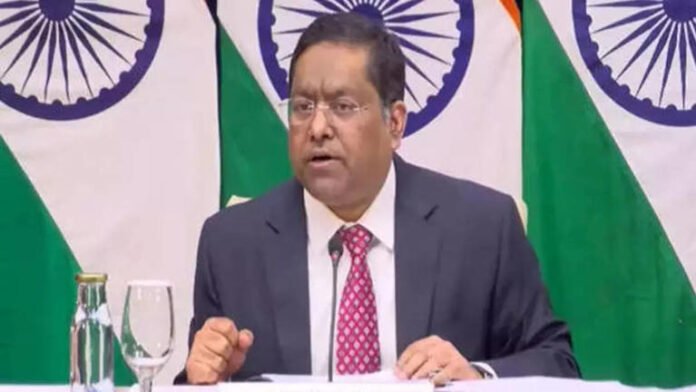India and China are reportedly inching closer to the resumption of the Kailash Mansarovar Yatra, an annual pilgrimage to one of the holiest sites in Hinduism and Tibetan Buddhism. According to a statement from the Indian Ministry of External Affairs (MEA), talks are ongoing to re-establish the pilgrimage route, which has been disrupted due to the COVID-19 pandemic and geopolitical tensions. The two countries are also exploring the possibility of direct flights for pilgrims, which would make the journey easier and more accessible.
The Kailash Mansarovar Yatra, which takes Indian devotees through the challenging terrain of the Himalayas to reach Mount Kailash and Lake Mansarovar, is a deeply revered journey. It has long been a symbol of spiritual connection between India and Tibet, and by extension, between India and China. The yatra, however, has faced numerous hurdles over the years, ranging from logistical challenges to political tensions between the two nations.
Now, with both countries showing a renewed commitment to the pilgrimage, the resumption of the yatra is being seen as a hopeful sign of improving relations and cooperation between the two countries.
A New Hope for the Pilgrims
The Kailash Mansarovar Yatra holds immense significance for Hindus, as Mount Kailash is believed to be the abode of Lord Shiva. The yatra is undertaken by thousands of devotees every year, many of whom travel through the Nathu La Pass, which connects the Indian state of Sikkim with Tibet (an autonomous region of China). The journey involves arduous travel across high altitudes and rugged terrain, with pilgrims braving the challenges of the route in order to perform religious rites at Mount Kailash and the sacred Lake Mansarovar.
Due to the COVID-19 pandemic and the closure of international borders, the yatra was suspended in 2020, leaving many pilgrims disappointed. Moreover, geopolitical tensions between India and China, particularly over the border dispute in Ladakh, further complicated the situation. However, with both countries now looking to stabilize relations and improve bilateral cooperation, the prospect of the yatra resuming has taken a more positive turn.
In recent months, India and China have engaged in diplomatic talks to discuss various issues, including the situation along the Line of Actual Control (LAC). Amid these discussions, the revival of the Kailash Mansarovar Yatra has emerged as a topic of mutual interest.
Direct Flights for Easier Access
One of the most exciting aspects of this development is the possibility of introducing direct flights from India to Tibet for the Kailash Mansarovar pilgrimage. Currently, pilgrims must travel by road to reach the starting point of the yatra, which is a laborious process involving multiple transfers, high-altitude travel, and long distances.
The introduction of direct flights would significantly reduce travel time and make the pilgrimage more convenient, especially for elderly devotees or those facing physical challenges. Such a move would also have practical benefits, as it would streamline the entire pilgrimage process and provide a more comfortable and organized experience for the thousands who undertake the journey each year.
According to the MEA statement, discussions are underway between both nations to determine the feasibility and operational details of such direct flights. These talks would likely focus on security protocols, air traffic control, and logistical considerations to ensure the smooth running of the flights.
Bilateral Cooperation Through Spiritual Diplomacy
The Kailash Mansarovar Yatra is an important example of spiritual diplomacy between India and China. While the two nations have had their share of conflicts and disagreements over the years, this shared pilgrimage has often served as a bridge to promote goodwill and cooperation.
For India, the yatra represents not just a religious journey, but a cultural and spiritual link to the people of Tibet and China. The resumption of the yatra would not only enhance people-to-people contact but also foster better bilateral relations. Pilgrims often return with a deep sense of spiritual fulfillment and renewed optimism for peace and understanding between the two nations.
On China’s part, resuming the yatra could be seen as a gesture of goodwill, helping to address concerns over the LAC dispute and other sensitive issues. China, too, has a vested interest in promoting stable relations with India, particularly in the economic and trade sectors. The tourism and cultural exchanges associated with the Kailash Mansarovar Yatra could play a positive role in reinforcing mutual respect and cooperation.
Potential Challenges and Obstacles
While the resumption of the yatra and the introduction of direct flights are positive developments, several challenges remain. The border dispute between India and China, which continues to simmer, is a potential obstacle that could disrupt plans for the yatra’s revival. Security concerns along the border areas and the sensitivity of Tibet as a region are additional factors that both countries will need to carefully address.
Another key issue is the pandemic’s long-term impact. Though global travel is gradually returning to normal, there may still be concerns about the safety and health protocols required to ensure the wellbeing of pilgrims. The introduction of direct flights, for instance, would require a detailed health and safety framework to protect travelers, especially in the high-altitude conditions of Tibet.
A Step Towards Normalization
Despite these challenges, the ongoing talks between India and China signal a desire to return to a more cooperative and constructive relationship. The Kailash Mansarovar Yatra’s resumption could serve as a symbol of healing and reconciliation. For the millions of Indians who hold this pilgrimage close to their hearts, the announcement of its potential revival is a glimmer of hope for spiritual unity and peaceful coexistence in the region.
As the two countries move forward with discussions on both the yatra and the potential for direct flights, it’s clear that this development is about more than just a religious journey. It is about fostering cross-border collaboration and building bridges—one step at a time—towards lasting peace and understanding between India and China.

